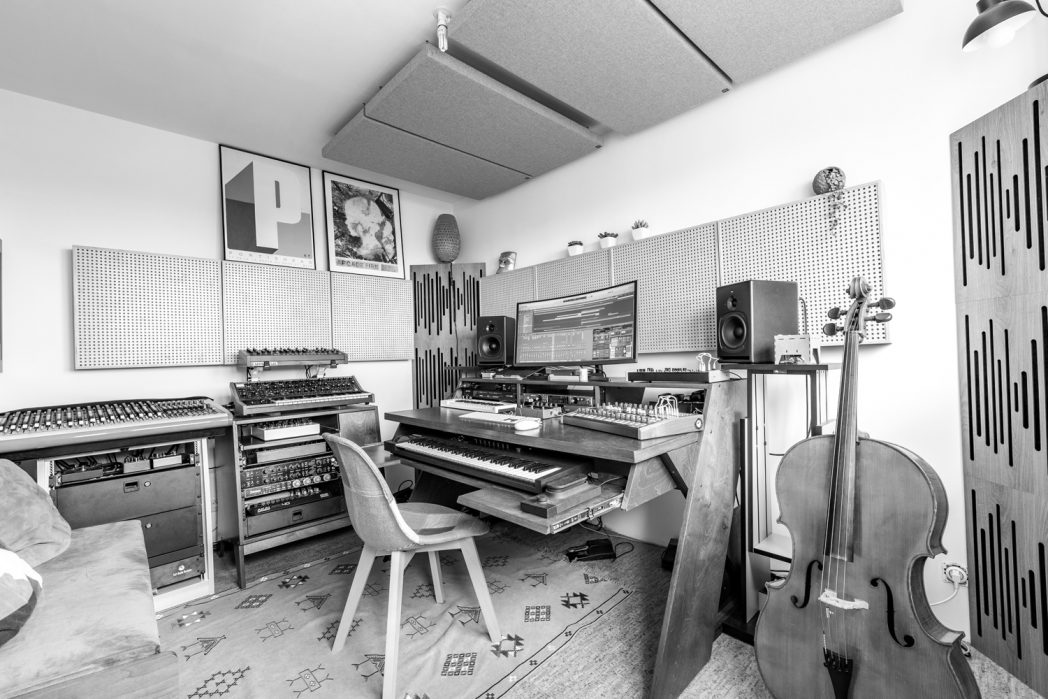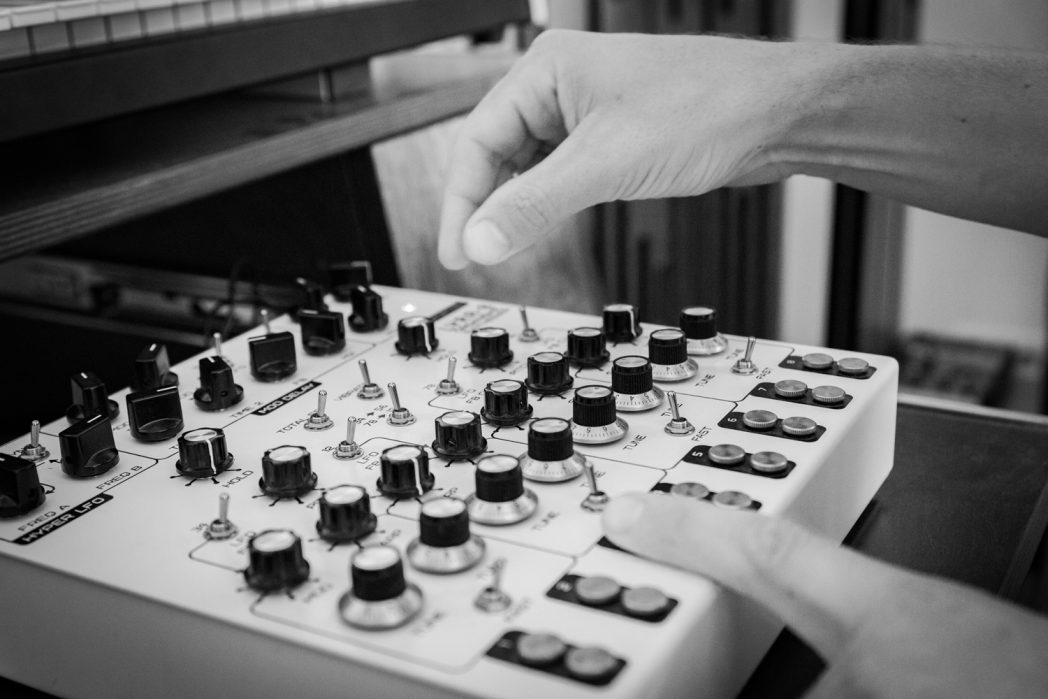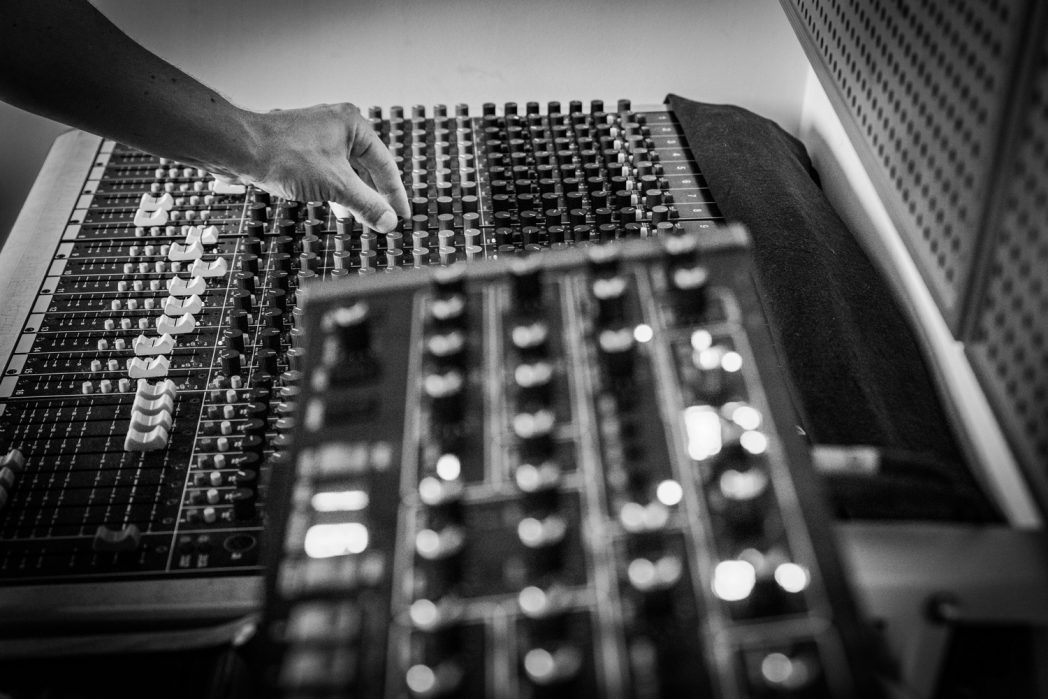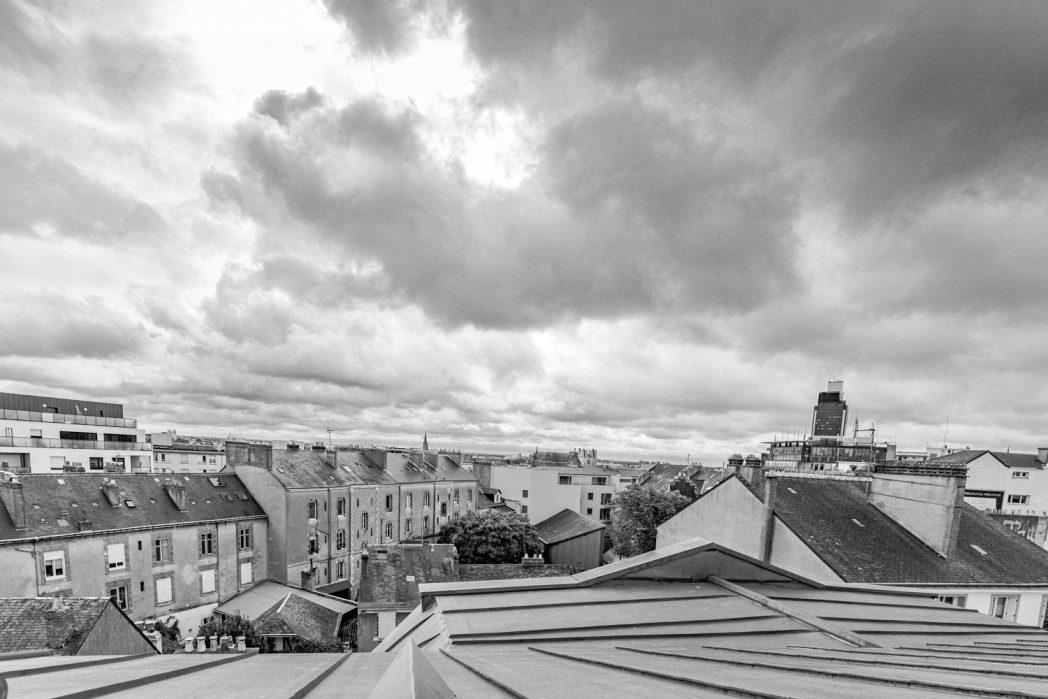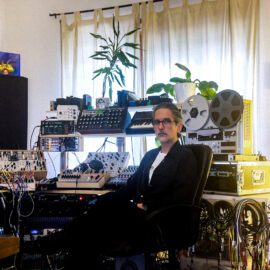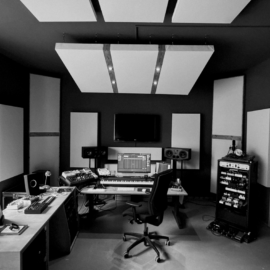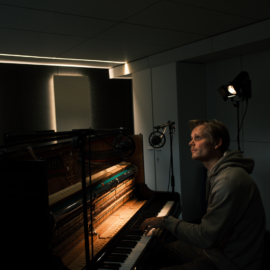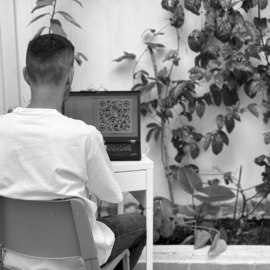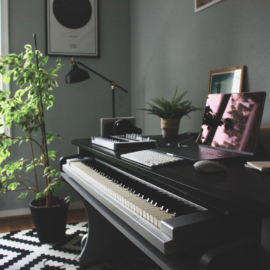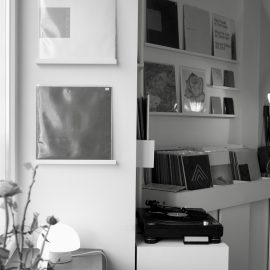Let’s start at the very beginning. Can you tell us how you got involved in composing, and what was your very first piece of gear?
I must have been 15-16 years old, I was studying cello at the conservatory and I started to compose with my cello by playing with a group of friends who were doing very melodic death metal at the time. So I became interested in the process of creating a song and recording it. I bought a multitrack cassette and a microphone to superimpose my cello parts and then very soon I bought a synthesizer to add additional parts.
How many different studio iterations have you gone through, and what does your final setup look like right now?
In every place I lived, I had a home studio, until I rented a real pro studio for 7 years. Today I was able to build my home studio totally isolated from the rest of my apartment. It totally corresponds to my needs of life and creation and I have a beautiful view of the sky which inspires me a lot.
Tell us about your favourite piece of hardware.
I like hardware analog synthesizers like Moog, Sequential Prophet 6 or Nyx 2 Dreadbox. I also like more esoteric things like Lyra 8.
And what about the software that you use for production?
My last crush comes from SLATE + ASH, Auras and Cycles. I use Logic Pro X mainly to control the studio and sound banks like Spitfire audio. I also use Ableton Live as an external machine for sound design and generative music.
Is there a particular piece of gear that you’re just dying to get your hands on and do you think one day you’ll have it?
Several of course 🙂 I would like to purchase a Foltek resonance Garden and a Nagra tape recorder. Each machine offers us a universe, it’s like people, we meet people to share moments and get richer, machines are a little bit the same.
Can you please share some aspects of sound design in your work?
I often start by looking for textures and timbres of sounds that will then guide my harmonic choices. I also like to start from improvisations to extract the best moments.
Any particular new techniques that you tried out for your new album?
I collaborated with a composer friend, Grégoire Vaillant, who brought me an outside perspective and helped me make certain choices that are sometimes difficult to make alone.
What does your live setup look like, and what do you bring with you when you travel for an extensive tour?
I have always wondered about the relevance of seeing an electronic music musician alone on stage. So I got attached to the visual aspect of live performances early on, using video among other things. Today I was able to build a scenography composed of cylinders on which we use video mapping. We shot with my team a good part of the images in Iceland. The fact of always having with me my computer, headphones and controllers allows me to compose musical bases everywhere, I like this possibility of the nomadic studio.
What is the most important environmental aspect of your current workspace and what would be a particular element that you would improve on?
Ergonomics and the fact that I can access it whenever I want. In the future, I would like to have a space to do acoustic sound recordings and invite musicians.
What can you tell us about your overall process of composition? How are the ideas born, where do they mature, and when do they finally see the light?
As I said earlier, it is when I make timbres and sound textures that I will be guided by them and take a direction. I create a lot of material before I start writing my piece. Each day is conducive to a different energy, sometimes I create harmonic suites and other days I create sound design and patches with my synthesizers. I record all this and some days I decide to file and arrange my ideas. That’s when I start to combine and enter into a narrative. Then comes the mixing stage which allows me to set an end to the process of creating a song.
After the piece is complete, how do you audition the results? What are your reactions to hearing your music in a different context, setting, or a sound system?
There is a lot of re-listening before validating a song, I like to put it on my phone so I can listen to it at any time. You have to try to find a global listening. To feel that everything is fluid and has its place. It is the idea of unity and cohesion and no longer multiple tracks and instruments. The mastering helps this, this famous Glue and a fresh ear that arrives at the end is important.
Do you ever procrastinate? If so, what do you usually find yourself doing during those times?
Yes, it happens to me, I have several remedies for that, either I tidy up and classify my sounds, I also re-listen to composers who have a similar approach to mine, and if it really doesn’t work I’ll do something else.
What gets you inspired?
I like to think that we have to find each other throughout life, it’s a form of a quest. To meet each other and take responsibility for who we are. Rather than fantasizing about what we are not. To do this I use our link with nature and the universe of which we are made up. I like to study everything that connects us to her in order to better decipher myself. Contemplation is also conducive to inspiration, my music reflects who I am and daily life is a continuity.
And finally, what are your thoughts on the state of “electronic music” today?
Electronic sounds are present in almost all styles of music. The democratization of the home studio allows a large number of people to express themselves, but unfortunately, we hear the same thing too often. Production tools are very powerful today and are conducive to innovation. However, I wonder about the artificial intelligence present in DAW. I like it when artists push the limits of expressivity in electronic music when at one time it was thought to be rigid and inhuman.

